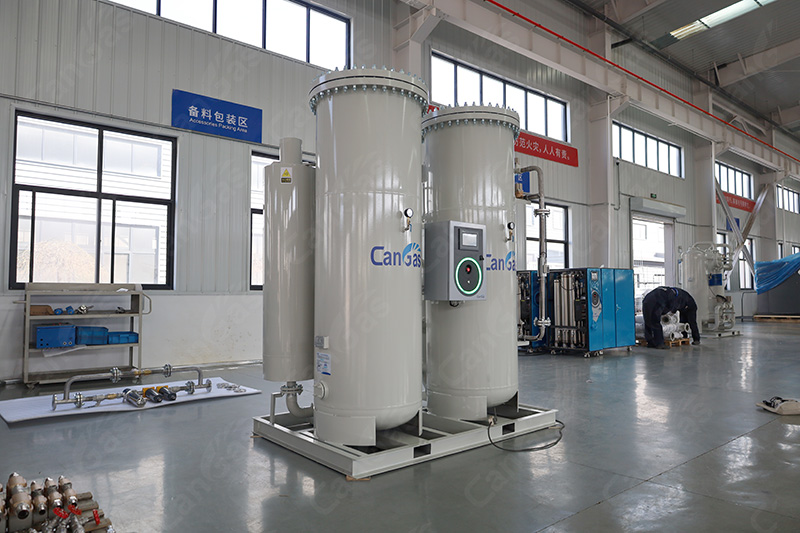What Are the Dimensions and Weight of a PSA Nitrogen Generator, and How to Plan the Equipment Room?
ReturnRegarding the dimensions and weight of a PSA nitrogen generator, different manufacturers may produce slightly varying sizes and weights for the same product. However, the following general rules apply:
⚫ For a given flow rate, the higher the nitrogen purity, the larger the equipment size.
⚫ For a given purity, the greater the gas production capacity, the larger the equipment size.
Although products from different manufacturers vary, the differences are generally not significant, primarily due to variations in production and design capabilities among manufacturers.
Rough estimates suggest that a small PSA nitrogen generator is similar in size to a small refrigerator, with a volume of around 2 cubic meters. In contrast, a large PSA nitrogen generator can exceed 4 meters in height and occupy more than 20 cubic meters of space. As for weight, it typically ranges from 300 kg to 9,000 kg, with the molecular sieve alone accounting for several hundred to a thousand kilograms.
To ensure the efficient, safe, and stable operation of a PSA nitrogen generator, as well as to meet maintenance, safety, environmental, and compliance requirements, a dedicated equipment room is necessary (except for containerized nitrogen systems). When planning an indoor space, in addition to accommodating the size of the PSA nitrogen equipment, the following factors must be considered:
1. Auxiliary Equipment
A PSA nitrogen system usually requires supporting equipment, such as air compressors, air dryers, and cooling systems. The dimensions, quantity, and placement of these auxiliary devices must be planned in advance.
2. Operation and Maintenance Space
When planning the equipment room, in addition to the size of the equipment, sufficient space must be allocated for operators to work and for equipment maintenance and repairs. Adequate passageways and maintenance areas should be provided to facilitate daily inspections and upkeep.
3. Safety Regulations
The design of the equipment room must comply with relevant safety regulations, including ventilation, fire protection, and explosion-proof requirements. These regulations may dictate specific room dimensions and layouts to ensure safe operation.
4. Scalability
If future expansion or additional nitrogen generation equipment is anticipated, the equipment room should be planned with scalability in mind, leaving enough space to accommodate potential growth.
5. Local Regulations
Different regions may have varying building and safety codes, which can influence the dimensions and design of the equipment room.
6. Room Height
In addition to floor area, the height of the equipment room must also be considered, especially for larger PSA nitrogen generators, which may require taller spaces for installation and maintenance.
In summary, CAN GAS recommends that buyers work closely with equipment suppliers to develop a detailed equipment room design based on specific equipment parameters and site conditions. This plays a decisive role in ensuring the efficient operation and extended service life of the equipment.


